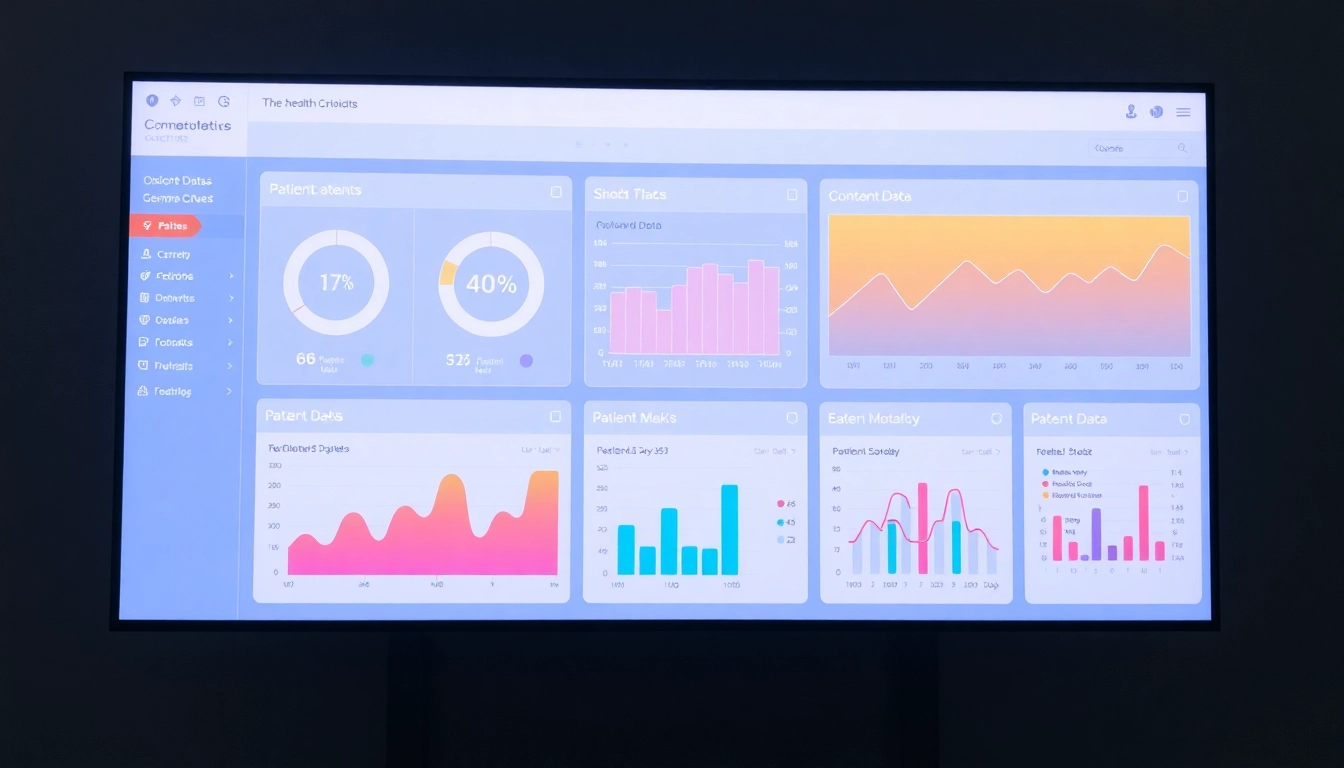Understanding Informatics in Healthcare
Definition and Importance of Health Informatics
Health informatics is a crucial interdisciplinary field that merges healthcare, information technology, and data analysis to enhance patient care outcomes. As defined by the www.informaticsview.com, this field employs data and information strategies to ensure that healthcare providers make informed decisions, ultimately leading to improved health outcomes and efficient service delivery. The rising importance of health informatics is rooted in its potential to streamline processes, reduce medical errors, and promote effective communication among healthcare providers.
In its essence, health informatics involves the systematic application of informatics principles to healthcare practices across various levels – from individual patient records to broader public health data initiatives. It serves as a backbone that integrates data from research, clinical practices, and administrative systems, enhancing collaboration among stakeholders and increasing the overall quality of care.
Key Components of Informatics Systems
To effectively implement health informatics, several key components must be integrated into practice. These include Electronic Health Records (EHRs), Clinical Decision Support Systems (CDSS), and health information exchanges (HIEs). Each of these components fulfills a unique yet interconnected role in the informatics ecosystem:
- Electronic Health Records (EHRs): EHR systems are digital versions of patients’ paper charts and provide real-time, patient-centered records that make information available instantly and securely to authorized users.
- Clinical Decision Support Systems (CDSS): These tools analyze data to provide personalized recommendations for patient care, helping providers make more informed decisions during clinical interactions.
- Health Information Exchanges (HIEs): HIEs facilitate the sharing of health-related information among organizations, improving the quality of care and enhancing access to data across various systems.
Collectively, these components foster an environment conducive to better clinical outcomes, enhanced patient safety, and effective healthcare management.
The Role of Technology in Modern Healthcare
Technology plays an integral role in the evolution of healthcare delivery. The advent of telemedicine, mobile health applications, and big data analytics has transformed not only the way care is administered but also how information is processed and utilized. For example, telemedicine expands the reach of healthcare services, allowing patients in remote areas to receive timely consultations and follow-ups without geographic barriers.
Furthermore, the integration of wearable technology has facilitated real-time health monitoring, providing invaluable data that healthcare providers can analyze to preemptively address potential health issues. Ultimately, technology within health informatics aims to replace traditional, reactive healthcare systems with proactive, predictive models, thereby enhancing the overall efficiency of healthcare service delivery.
Current Trends in Health Informatics
Emerging Technologies Transforming Healthcare
The landscape of health informatics is rapidly evolving with emerging technologies such as artificial intelligence (AI), machine learning, and blockchain. AI has particularly garnered attention for its capability to analyze large data sets and extract actionable insights, leading to improved diagnostics and treatment pathways. Machine learning algorithms can study patterns in patient data to predict outcomes, suggest treatments, and personalize the patient experience.
Blockchain technology offers unparalleled security for patient data, enabling safe, decentralized data storage and sharing. This technology not only protects sensitive health information from unauthorized access but also empowers patients with greater control over their own health data and transparency in healthcare transactions.
Data Analytics and Patient Outcomes
Data analytics is a cornerstone of health informatics that correlates the use of statistical models and algorithms to analyze healthcare data for better decision-making. By leveraging data analytics, healthcare systems can identify trends, measure effectiveness, and improve patient outcomes. For instance, predictive analytics can forecast disease outbreaks, while retrospective analyses can reveal insights on treatment efficacy and patient follow-up adherence.
Additionally, analytics in health informatics can reduce costs by identifying areas where inefficiencies may exist, thereby allowing healthcare administrators to optimize resource allocation and improve service delivery.
Integrating Electronic Health Records (EHRs)
The integration of EHRs remains a pivotal aspect of health informatics, as these systems provide the foundation for comprehensive healthcare data management. Successful EHR integration hinges on several factors, including proper system selection, interoperability standards, and user training.
Efficient EHR integration results in streamlined workflows, improved clinical outcomes, and enhanced patient engagement. It facilitates seamless access to patient information, enabling healthcare providers to coordinate care effectively and reduce duplication of services.
Challenges Faced in Health Informatics
Data Privacy and Security Concerns
Data privacy and security are paramount in health informatics, especially considering the sensitivity of patient information. Recent high-profile data breaches have underscored the importance of implementing robust security measures to safeguard against unauthorized access and ensure compliance with regulations such as HIPAA.
Strategies to enhance data security include the use of encryption, robust user authentication, and regular security audits. Additionally, educating healthcare employees about data privacy best practices is crucial in defending against potential vulnerabilities.
Interoperability Issues Among Systems
Interoperability remains a significant challenge in health informatics, as disparate systems often fail to communicate seamlessly, leading to data silos. This fragmentation can hinder care coordination, impede information exchange, and ultimately compromise patient safety. To address these issues, organizations must invest in standardized data formats and protocols that promote interoperability.
Collaborative efforts through industry-wide initiatives, such as FHIR (Fast Healthcare Interoperability Resources), are essential to create a more connected healthcare ecosystem where data can be accessed fluidly across different platforms.
Resistance to Adoption in Healthcare Settings
Despite the clear benefits of health informatics, resistance to technology adoption persists in many healthcare settings. Factors contributing to this resistance include the fear of change, perceived complexity of new systems, and lack of familiarity with technology.
Engaging stakeholders at all levels of the organization is essential for overcoming these barriers. Creating a culture that embraces technology through ongoing education, training opportunities, and demonstrating clear benefits can facilitate smoother transitions to informatics-driven systems. Additionally, involving end-users in the system selection and implementation processes fosters a sense of ownership and acceptance.
Best Practices for Implementing Informatics Strategies
EHR Implementation Steps for Success
Implementing Electronic Health Records requires a systematic approach to ensure success. Key steps in the process include:
- Needs Assessment: Identify organizational requirements and desired outcomes based on existing workflows and data management needs.
- Vendor Selection: Choose an EHR system that meets the identified needs while ensuring compatibility and scalability with future requirements.
- Stakeholder Engagement: Involve key stakeholders throughout the process – from clinicians to IT staff – to ensure their perspectives are considered.
- Comprehensive Training: Provide hands-on training and continuous support to users to alleviate frustrations and build confidence in using the system.
- Evaluation and Feedback: After implementation, regularly seek feedback, monitor system performance, and make necessary adjustments to optimize usability and effectiveness.
Training and Education for Healthcare Providers
Continuous training and education are essential for healthcare providers to maximize the benefits of informatics systems. Regular workshops, e-learning modules, and simulation exercises can enhance user competency and confidence. Training should cover not only the operational aspects of the systems but also emphasize the importance of data security and patient privacy protocols.
Institutions should foster an environment of ongoing learning where healthcare professionals can share best practices and innovative approaches to informatics. Ensuring that staff are well-versed in technologies not only enhances workflow efficiency but also plays a critical role in improving patient outcomes.
Monitoring and Evaluating Informatics Systems
Effective monitoring and evaluation of informatics systems are vital for identifying areas of improvement and measuring impact. Key performance indicators (KPIs) should be established to assess system performance in areas such as user satisfaction, data accuracy, and patient outcomes.
Regular audits, user surveys, and performance data analyses will provide insights that can inform adjustments and upgrades to the systems in place. Engaging stakeholders in feedback sessions can illuminate pain points and highlight areas where further training may be needed.
The Future of Health Informatics
Predictions for Healthcare Technology Innovation
As we look to the future, several predictions can be made regarding the trajectory of health informatics. Advances in technologies such as artificial intelligence and machine learning will likely revolutionize the diagnostic process, allowing for more targeted and personalized treatment plans.
Additionally, the continuous push toward greater interoperability is expected not only to enhance care coordination but also facilitate the integration of genomics and personalized medicine into standard practices. This paradigm shift will create an environment where healthcare is increasingly data-driven, reactive, and preventive.
The Evolving Role of Data in Patient Care
The role of data in healthcare is evolving rapidly. Information is no longer static but dynamically used throughout a patient’s journey. From real-time monitoring through wearables to predictive analytics that anticipate patient needs, the health informatics landscape will leverage data to optimize every aspect of care.
Moreover, patient-generated data will play an increasingly integral role in the decision-making processes. Engaging patients as active participants in their care through health apps and platforms that allow them to share their health data with providers is set to enhance patient-provider relationships and improve healthcare experiences significantly.
Preparing for the Next Generation of Health Informatics
Preparing for the next generation of health informatics requires a forward-thinking approach to both technology and human resources. Healthcare organizations must invest in tech-savvy professionals who understand the intersection of data science and healthcare delivery.
Building partnerships with technology providers, universities, and industry leaders will enhance access to innovative tools and training resources, paving the way for collaborative efforts that will drive the future of healthcare. Embracing a culture of continuous improvement and innovation will empower healthcare providers to adapt to changing landscapes while maximizing the benefits of health informatics.



